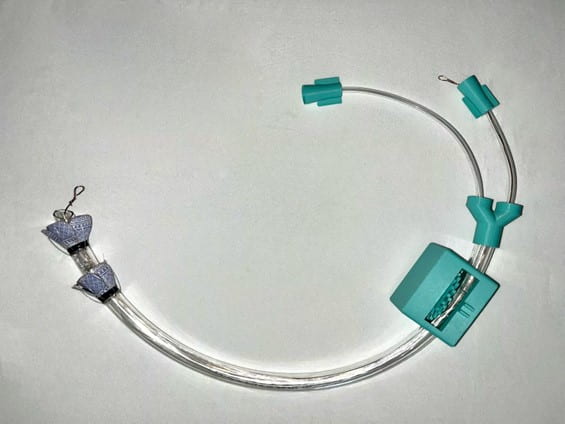Get to know our team on LinkedIN:
Jack Conti, Pallavi Ekbote, Raghav Jayanthi, Jaeyoung Lee, Bailey Moore
BULLSEYE
Automated intravenous catheter detection and insertion device for difficult intravenous access patients.
Project Description:
Surgeons have a need for a microcatheter which reduces non-target embolization near complex vasculature. Non-target embolization is a problem that occurs when a therapeutic agent that is directed towards specific target tissues and cells, goes into areas other than the target tissues and cells. This can lead to complications and extended recovery times. The goal of our project is to design a medical device that reduces non-target embolization in embolization procedures performed for many different types of cancer. Our product is the double dutch, a specialty microcatheter that reduces procedural complications and provides a higher level of precision for the practitioner. Our device reduces operation costs and time by an estimated 7% and reduces prep time by 80% or more, saving $600 per case compared to current competitive devices like balloon catheters. The target addressable market for the device is significant at $10.2 billion. Roughly 10% of use cases require speciality microcatheter meaning the service addressable market is estimated at $1 billion. While competitor microcatheter devices are fairly effective in delivering the therapeutic agent, they do have some issues. They don’t block embolic flow adequately, can be expensive, can deliver excess embolic, does not provide instantaneous control, and has a large prep time due to the use of balloon occlusion. Our device is innovative and versatile, outperforms competitors, and is more affordable for clinics. Our distinguishing factor is our rose-occlusion mechanisms which can be controlled separately and instantly via a dial mechanism. This makes our device more versatile than any competitor and can be used to treat patients diagnosed with cancer, GI bleeds, artery embolizations, and more.



